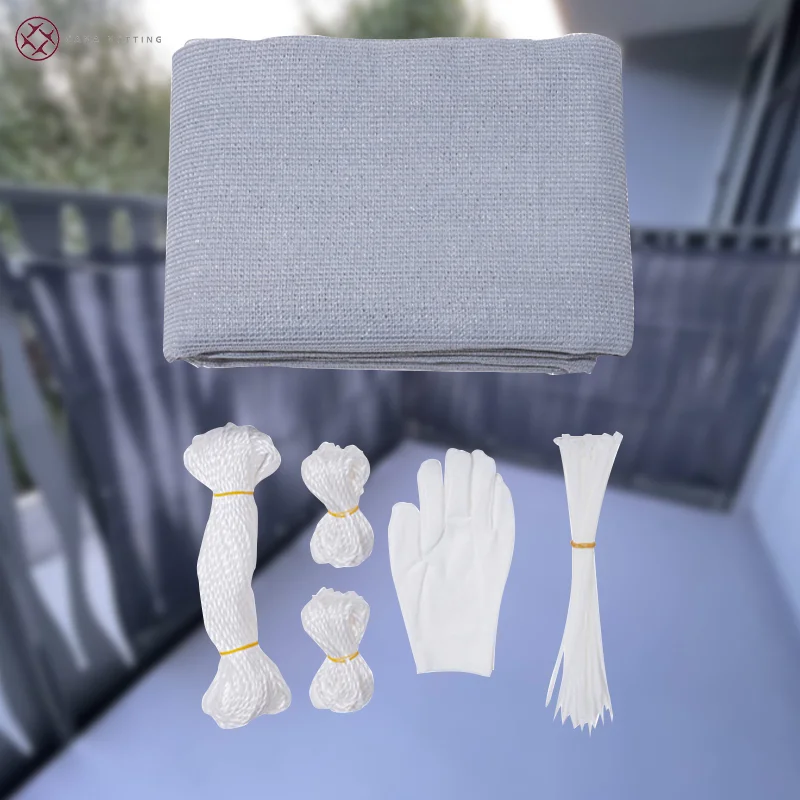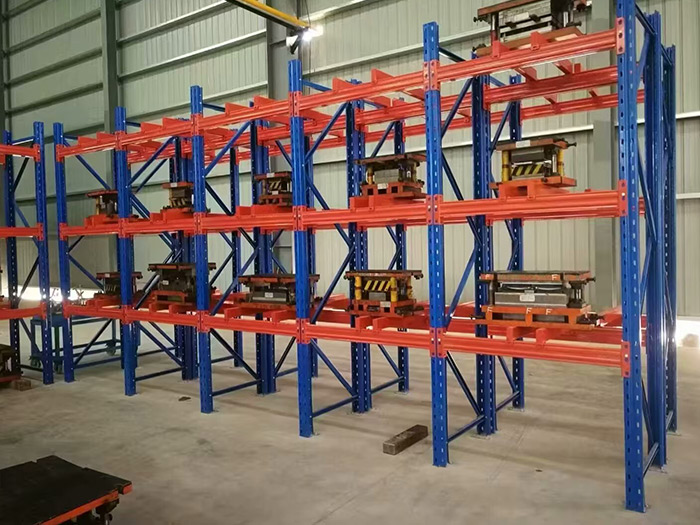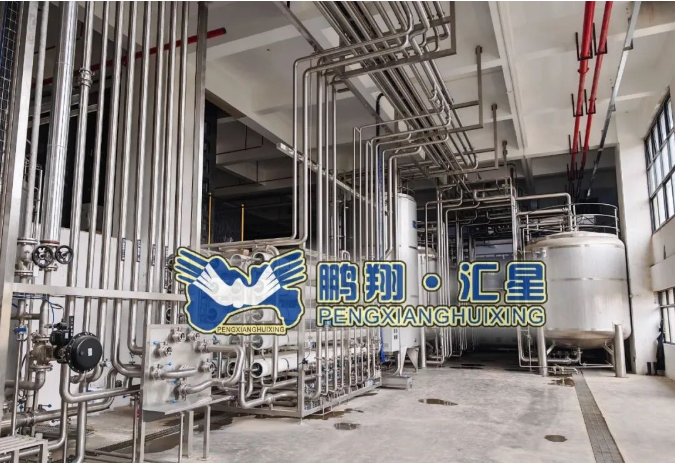Balcony safety nets play a crucial role in preventing accidents, ensuring the safety of children, pets, and even adults in high-rise buildings. Among the various types of safety nets, warp-knitted safety nets stand out due to their high tensile strength, durability, and cost-effectiveness. In this blog post, CANA will share the production process of warp knitted apartment balcony safety net for sale, covering material selection, knitting techniques, finishing treatments, quality control, and installation considerations.
Warp Knitted Apartment Balcony Safety Net Material Selection
The production of warp-knitted balcony safety nets starts with the careful selection of raw materials. High-density polyethylene (HDPE) and polypropylene (PP) are commonly used due to their superior strength, resistance to UV radiation, and durability in outdoor environments. Nylon and polyester are also used for their flexibility and impact resistance.
Key properties required in the raw materials include:
- High tensile strength: To withstand significant loads and external forces.
- UV resistance: To prevent degradation from prolonged sun exposure.
- Weather resistance: To endure rain, wind, and temperature variations.
- Lightweight nature: For ease of installation and handling.
Before the knitting process, the selected polymer materials undergo extrusion and filament formation. The raw polymer pellets are melted and passed through a spinneret to form continuous filaments, which are then cooled and wound onto bobbins for further processing.
Warp Knitting Process of Apartment Balcony Safety Net
1. Warp Preparation
The warp knitting process begins with warp preparation, where individual yarns are wound onto warp beams. The number of warp beams used depends on the complexity and density of the safety net. Proper tension control is critical to prevent defects in the final product.
2. Knitting Technique
Warp knitting differs from weft knitting in that the yarns run in the warp direction (lengthwise) rather than the weft (widthwise). This results in a highly stable and strong fabric structure, making it ideal for safety applications.
The primary knitting techniques used in the production of warp-knitted balcony safety nets include:
- Tricot Knitting: Produces a soft, flexible, and lightweight netting structure.
- Raschel Knitting: Commonly used for heavy-duty safety nets due to its robust and stable mesh structure.
3. Mesh Design and Formation
During knitting, specific mesh patterns are designed based on the required safety standards. The mesh size can be customized to prevent objects or small children from slipping through. The most commonly used patterns include:
- Square mesh: Offers uniform load distribution and stability.
- Hexagonal mesh: Provides enhanced flexibility and aesthetic appeal.
- Diamond mesh: A compromise between strength and elasticity.
The knitting machine, equipped with guide bars and latch needles, interloops the yarns to create a consistent and durable net structure. The choice of stitch type and density determines the net's overall strength and elasticity.

Finishing Treatments of Apartment Balcony Safety Net
Once the netting fabric is produced, it undergoes various finishing treatments to enhance its functional properties.
1. Heat Setting
Heat setting stabilizes the net structure, reducing shrinkage and improving dimensional stability. The nets are subjected to controlled heat treatment, ensuring they maintain their shape even under tension.
2. UV Stabilization
Since balcony safety nets are exposed to sunlight, UV stabilizers are added during manufacturing to enhance resistance to ultraviolet radiation. This prevents material degradation and extends the net's lifespan.
3. Coating and Impregnation
To improve durability and weather resistance, safety nets are often coated with protective materials such as:
- Polyurethane (PU) coating: Enhances flexibility and abrasion resistance.
- Flame-retardant coatings: Essential for fire safety compliance.
- Water-repellent treatments: Prevents moisture absorption, reducing mold and mildew growth.
4. Edge Reinforcement
The edges of the net are reinforced with thicker ropes or binding materials to prevent fraying and enhance strength. Edge reinforcement is crucial for secure installation and long-term performance.
Apartment Balcony Safety Net Quality Control and Testing
Ensuring the reliability and safety of warp-knitted balcony nets requires stringent quality control measures. Various tests are conducted to assess:
- Tensile Strength: Ensures the net can withstand applied loads without breaking.
- Impact Resistance: Tests the ability of the net to absorb and dissipate impact forces.
- UV Resistance Testing: Simulates prolonged sun exposure to verify long-term durability.
- Weathering Tests: Evaluates the performance of nets under varying environmental conditions.
- Flame Retardancy Tests: Ensures compliance with fire safety regulations.
Each batch of nets undergoes rigorous testing to meet industry standards such as ISO 9001, ASTM D6775, and EN 1263-1.
Cutting, Stitching, and Customization
Once the netting fabric passes quality control, it is cut into required dimensions using automated precision cutters. Stitching or ultrasonic welding is used to join sections and create customized net shapes for different balcony sizes. Additional features like fastening loops, hooks, and reinforced borders are integrated to facilitate easy installation.
Packaging and Distribution of Apartment Balcony Safety Net
After final assembly, the nets are carefully packed to prevent damage during transportation. Common packaging methods include:
- Roll Packaging: Nets are wound into rolls for easy handling.
- Folded Packaging: Ensures compact storage and minimizes creases.
- Individual Packing: Custom packages for retail sale or installation kits.
Nets are then distributed to wholesalers, retailers, and installation service providers, ensuring availability in the market.
Installation Considerations of Apartment Balcony Safety Net
Proper installation is crucial for the effectiveness of balcony safety nets. Key installation factors include:
- Secure Anchoring: Using strong fasteners and hooks to attach the net to walls or railings.
- Correct Tensioning: Ensuring the net is taut to prevent sagging.
- Periodic Inspection: Checking for wear and tear over time and replacing damaged sections as needed.
Conclusion
Warp-knitted apartment balcony safety nets provide a reliable and durable safety solution for high-rise buildings. The production process involves meticulous material selection, advanced knitting techniques, and rigorous quality control to ensure high-performance safety nets. By understanding the manufacturing process, consumers and industry professionals can make informed choices about the best safety net options available in the market.
www.cananetting.com
CANA


More Stories
LTE CAT4 Performance Analysis: Downlink/Uplink Efficiency in Portable WiFi Hotspots
High-Performance Cat7 S/FTP Network Cables for Infrastructure
Performance, Application Scenarios and Selection of External Panel Materials for Outdoor Mobile Shelters